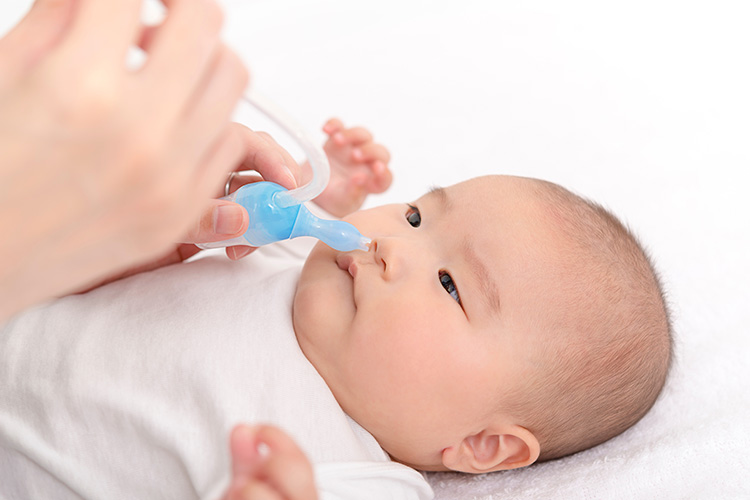
A stuffy nose can be extremely uncomfortable for the little ones, and worrisome for parents who are unable to identify the cause. Consultant ENT surgeon Dr Leslie Koh, explains this condition and the actions to take.
What triggers nasal congestion?
Nasal congestion in babies and toddlers may have numerous causes. As Dr Koh explains, here are some common triggers:
Allergies: Allergies to airborne substances like pollen, dust mites or pet dander. Typically, in Singapore, these are perennial (year-round) allergies.
The common cold: Viral infections such as the common cold can cause inflammation and swelling of the nasal passages, frequently causing nasal congestion.
Sinus infections: These can be bacterial or viral. They usually occur when a common cold or allergy causes blockage and a build-up of fluid in the sinuses.
Adenoid enlargement: The adenoids are tissues located at the back of the nose, similar to the tonsils in the mouth. When they become large or infected, they obstruct the nasal airway and cause nasal obstruction.
Structural abnormalities: Structural issues in the nose such as a deviated nasal septum or narrow nasal passages may be a cause of chronic nasal congestion.
Environmental factors: Exposure to common irritants such as smoke, air pollution or strong odours may irritate the nasal passages, causing swelling and triggering congestion.
How can I identify symptoms of nasal congestion in my child?
“As babies are unable to blow their noses and express their needs verbally, identifying symptoms of nasal congestion can be very challenging.” acknowledges Dr Koh.
However, there are several signs to look out for to indicate nasal obstruction:
How do I know exactly what’s causing my child’s stuffy nose?
Determining the exact cause of your child’s stuffy nose can be challenging in the absence of a proper medical examination. Nevertheless, several factors may help identify the possible cause.
“These include the duration of symptoms. If the stuffy nose persists for several weeks or occurs intermittently over an extended period of time, it might be due to chronic allergies or recurring infections,” elaborates Dr Koh. “If your child has concurrent itchy and watery eyes, sneezing, or a rash, nasal congestion is likely due to allergies. Environmental triggers such as exposure to cigarette smoke, strong odours, dust, or pet dander can potentially worsen symptoms in allergic or sensitive individuals.” Conversely, fever, cough or coloured nasal discharge could indicate signs of a viral or bacterial infection.
What are some solutions to ease congestion?
“Using saline nasal drops and sprays can help loosen mucus and moisturise the nasal passages, making it easier to breathe,” advised Dr Koh. “A few drops or sprays in each nostril can be administered, followed by careful gentle suction with a nasal bulb syringe to remove mucus.”
Over the counter medication such as oxymetazoline can be used for temporary quick relief of symptoms, though it is important not to use these for prolonged periods due to the risk of rebound nasal congestion, Dr Koh cautions.
Using a small pillow to elevate your child’s head or slightly raising the head of the crib or bed can help improve nasal drainage and relieve congestion. Also, ensuring adequate hydration can keep nasal mucus thin and easier to clear.
“Sitting in a steam-filled bathroom for a few minutes may help loosen mucus and alleviate congestion as well,” said Dr Koh. “A steamy environment can be created by running a hot shower. However, do not expose your child to direct contact with hot water or steam. ”
When is it time to consult a doctor?
It is advisable to consult a doctor under the following circumstances:
Article contributed by Dr Leslie Koh, accredited doctor from Mount Alvernia Hospital.
This article is taken from our MyAlvernia Magazine Issue #50. Click here to read the issue on our website.